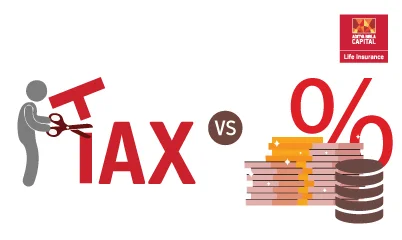How are Tax Returns Filed Electronically?


Get Guaranteed Returns After a Month^
Unlock the Power of Smart Investment!


-
 Table of Contents
Table of Contents- What is income tax?
- What is a tax return for income?
- Forms ITR
- Due Date for ITR Filing: AY 2023–24
- What Benefits Come with ITR Filing?
- Who May Online File Income Tax Returns?
- Methods for Online Income Tax Filing
- Guidelines for Online ITR Filing
- Documents Required for Online Income Tax Return Filing
- Steps for Online Income Tax Filing
- ITR1 and ITR4S filing procedures online
- Things to consider when submitting electronically
- Conclusion
- FAQs
What is income tax?
What is a tax return for income?
Forms ITR
Due Date for ITR Filing: AY 2023–24
What Benefits Come with ITR Filing?
Who May Online File Income Tax Returns?
Methods for Online Income Tax Filing
Guidelines for Online ITR Filing
Documents Required for Online Income Tax Return Filing
Steps for Online Income Tax Filing
ITR1 and ITR4S filing procedures online
Things to consider when submitting electronically
Conclusion
FAQs
The Income Tax Department assigns people required to withhold TDS a ten-digit alphanumeric number known as a TAN or Tax Deduction Number.
It assists you in filing your income tax return and is sent at the end of the year. Remember that Form 16 is not a substitute for the income tax return. Even if the right TDS has been deducted by Form—16, filing an income tax return is required.
An assessee may use the income-tax e-filing system to view and reply to AIS information. He may also utilise an offline tool as an alternative.
One cannot claim a TDS credit for taxable income in the next year. As a result, this TDS credit may be carried over to the next year and claimed in the year that payment is given for taxation.
When filing an income tax return is voluntary and not required, the late filing charge under Section 234F does not apply to the taxpayer.
The new section 112A stipulates that long-term capital gains above Rs. 1 lakh are taxable. Gains up to Rs. 1 lakh are not subject to tax. Hence, they cannot be referred to as exempt income. Any long-term capital loss resulting from the sale of listed equity shares is thus acceptable for offset and carryover.
About Author
for Salaried Individuals¹
-
Disclaimer
ABSLI Salaried Term Plan (UIN:109N141V01) is a non-linked non-participating individual pure risk premium life insurance plan; upon Policyholder’s selection of Plan Option 2 (Life Cover with ROP) this product shall be a non-linked non-participating individual savings life insurance plan.
1LI Age 21, Male, Non Smoker, Option 1: Life Cover, PPT: Regular Pay, SA: ₹ 1 Cr., PT: 10 years, Premium paying term: 10 years, Annual Premium: ₹ 5900/- ( which is ₹ 491.66/month) Premium exclusive of GST. On death, 1 Cr SA is paid and the policy terminates.
ADV/6/23-24/532
Subscribe to our Newsletter
Get the latest product updates, company news, and special offers delivered right to your inbox
Thank you for Subscribing
Stay connected for tips on insurance and investments

 Home Loans
Home Loans
 Personal
Loans
Personal
Loans
 SME Loans
SME Loans
 Business Loans - Udyog
Plus
Business Loans - Udyog
Plus
 Loan against Securities
Loan against Securities
 Mutual Funds
Mutual Funds
 Stock and
Securities
Stock and
Securities
 Portfolio
Management Services
Portfolio
Management Services
 Pension Funds
Pension Funds
 Life
Insurance
Life
Insurance
 Health
Insurance
Health
Insurance
 Wellness
Solutions
Wellness
Solutions
 Pay Bills
Pay Bills
 Pay anyone
Pay anyone
 Pay on call
Pay on call
 Payment
Lounge
Payment
Lounge
 ABC Credit
Cards
ABC Credit
Cards

 1800-270-7000
1800-270-7000









